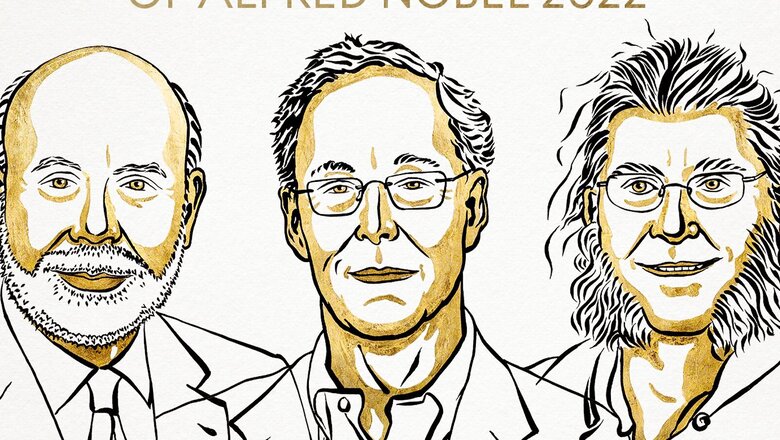
views
It was just a few weeks ago that I was teasing some research associates about the existence of banks. After living for over two decades in the US, I moved to India only two months ago to join as the dean of the first educational institute to focus predominantly on issues related to public leadership in India – Rashtram School of Public Leadership at Rishihood University. To get younger minds excited about asking more profound questions, I coaxed them to think about the existence of modern banks.
The banks, in their present shape and size, are one of the most critical foundations of the modern world. Though they have existed for aeons, our understanding of their hows and whys is of the recent vintage.
It was the winners of this year’s Nobel Prize in Economics who helped us build a more concrete framework to understand the reasons behind the existence of banks. The Nobel Prize to Professors Ben S Bernanke, Douglas W Diamond, and Philips H Dybvig in the field of economic sciences was long overdue. If Bernanke paved the way for the ongoing creative destruction of the neoliberal inequality-incubating economic system, the other two provided “priceless” insights into the working of modern economies.
It was in 2003, when I was working as an intern at the Federal Reserve Bank of Dallas, that I heard Prof Bernanke would visit us. It was to oversee the conference, which was being held to commemorate one of the sharpest economic minds in the last 100 years – Nobel laureate Milton Friedman. Bernanke came onto the research floor like a celebrity and left; the only thing I remember was the moon that had appeared on his head, like the one in Shiva’s locks.
When the financial crisis hit the US economy in 2008, I was working as a real estate finance consultant in Dallas, and the counterintuitive operation of throwing gas on the fire to quench its thirst began. I have watched the US economy careening from one edge to the other ever since with rising inequality, the increasingly oppressive US healthcare system, and unimaginable rise of China, and an uncontrollable polity – all happening under the eagle-like eyes of Bernanke. One might assume that history will be kind to the likes of Bernanke after his Nobel, but I have my doubts.
While Bernanke helped us build a novel perspective in our understanding of the way bank failure propagated a financial crisis, he was at the helm of preventing the crisis from taking a catastrophic turn. The crisis did turn catastrophic, but not in the way many could imagine and see.
I learned about the beautiful rationale for the existence of modern banks from none other than Prof Neil Wallace at Penn State; it was during his course on the modern monetary theory that he explained the rationale. In Prof Wallace’s course, I learnt about the Diamond-Dybvig transformational model that changed how I looked at economics.
And ever since, the critical reason for the existence of banks turned out to be one of my favourite questions to excite younger minds about the beauty of economics and bring down lesser mortals from their know-it-all plinths.
Most give obvious answers that banks are there to lend or take deposits. I have asked this question for over 20 years, but no one has ever told me three of the most beautiful foundational ideas behind the existence and pervasiveness of modern banks. The first is that all depositors will not come rushing to take their deposits away en masse; the second is that banks do the risky job of maturity transformation – they turn short-term deposits into long-term lending for housing, vehicles, and infrastructural development; and the third is the creation of money because of the fractional reserve requirement.
All three together made modern banking pervasive and a critical feature of human life. It was the insights from the works Diamond-Dybvig that India could take the momentous steps of making it easier for millions to open a bank account. Though I am not sure about Bernanke, I am certainly happy that Diamond and Dybvig won the prize long overdue to them for changing the way we look at the world!
(The writer is dean and professor of Rashtram School of Public Leadership, Rishihood University. Views expressed are personal)
Read all the Latest Opinions here


















Comments
0 comment